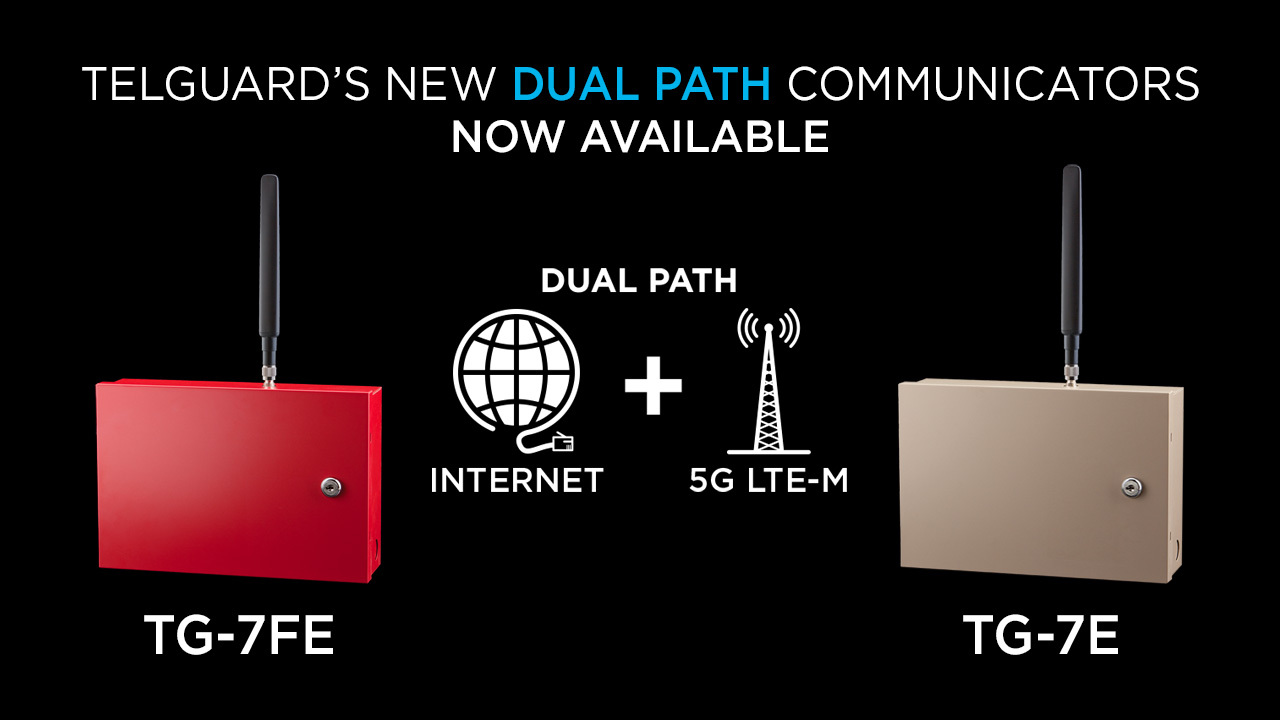Telguard Announces First 5G LTE-M Communicators with Internet and Cellular Dual Path

The TG-7FE and TG-7E allow customers to cut traditional landlines and use internet connectivity and cellular for a flexible dual path solution.
Telguard, a leader in security and life safety communications, is pleased to announce its first line of dual path communicators with an internet pathway. These new offerings also make Telguard the first company to offer a dual path communicator that combines 5G LTE-M with internet connectivity for commercial fire use.
Telguard has been the leader in universal cellular fire alarm communicators for decades, and the addition of an internet pathway offers dealers more flexibility than ever. Customers no longer have to rely on old and expensive telephone lines and can leverage internet connectivity as another path for commercial fire and intrusion communicators.
The communicators connect to the internet via a wired LAN connection, and if the LAN goes down, 5G LTE-M immediately steps in to deliver signals.
“This advancement in Telguard’s technology allows anyone to bring internet access to virtually any existing fire or security panel,” said Telguard President George Brody. “This means new business opportunities for our dealers on takeovers, upgrades and landline replacement to now use the latest cellular technology and readily available internet access to deliver alarm signals.”
The two products available are the TG-7FE for commercial fire and the TG-7E for commercial intrusion. Both are dual path and offer the option to use internet connectivity and 5G LTE-M cellular. Each product is engineered and manufactured in the U.S. with outstanding service by the Telguard’s technical and customer support team.
Both the TG-7FE fire communicator and the TG-7E alarm communicator power directly from the panel’s 12V or 24V auxiliary power supply or via an included plug-in transformer. They use LTE-M bands for 4G and 5G network compatibility, better building penetration, and longest product longevity. Both communicators interface with the panel over the dialer (DACT) connection for universal compatibility.




